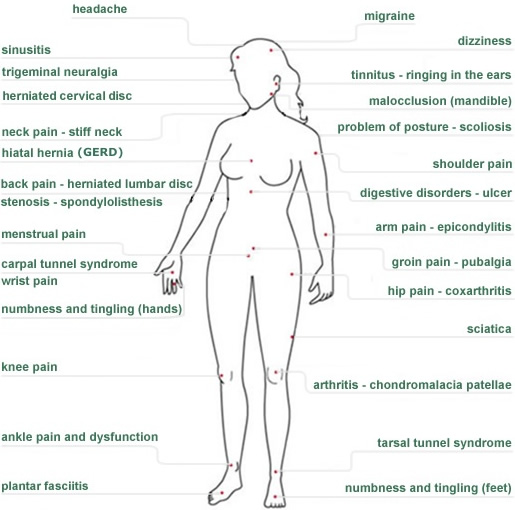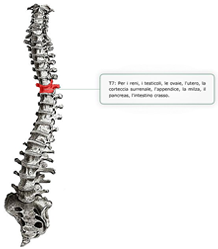Applied Kinesiology Diagnosis
Hello again everyone. In my last newsletter, I explained the evolution of Applied Kinesiology and how it works. This month, I’ll describe the unique ways in which Applied Kinesiologists arrive at the root causes of problems.
Diagnosis: Figuring out what is wrong
Both doctors and patients tend to be eager to give a name to symptoms. The illusion is that once symptoms are labeled, we have more control over them. Insurance companies perpetuate this paradigm by requiring an official diagnosis before they’ll reimburse. However, the reality is, many diagnoses are inaccurate and therefore misleading. Moreover, giving symptoms a name will often put the brakes on further investigation into the root causes.
Accurate therapy depends on accurate diagnosis
To truly understand what's wrong with patients, it's essential that we don't fall into the trap of seeking labels for symptoms, and instead diagnose the processes which underlie symptoms.
Take Fibromyalgia for example, the diagnosis given by the American College of Rheumatology defines this condition as meeting the following criteria:
• A history of widespread pain lasting more than three months affecting all four quadrants of the body, i.e., both sides, and above and below the waist.
• Tender points – there are 18 designated possible tender points (although a person with the disorder may feel pain in other areas as well).
This description is clear cut. Patients who have been feeling terrible without knowing why, will feel reassured when they are told they have Fibromyalgia. At least someone finally understands what's wrong with them. But do they really?
Diagnose the process!
Beyond providing a label, a doctor must also ask "What are the processes underlying the patient's malaise?" "Why is there widespread pain?" "Is liver detoxification sluggish?" "Are the adrenals near exhaustion?" "Is there leaky gut or intestinal dysbiosis?" "Is there a neurotransmitter imbalance?" If we can answer yes to two or more of these questions, then what kind of diagnosis can we possibly give that encompasses all the body systems that are functioning at subpar level?
Diagnosing with six senses
With experience, a practitioner becomes more adept at using his six senses to diagnose. We like to say that the examination begins as soon as a patient walks through the door.
Sight: We observe how patients move. Are they guarding when getting out of the chair due to pain? Is there a sideward hitch when they walk? (Gluteus Medius muscle / reproductive organs). As they walk, does the patient flail one arm while the other stays still? (Latissimus Dorsi / pancreas). This suggests blood sugar disorders. An example of is Vladimir Putin.
In conversation, we look for physical abnormalities like dilated pupils (side effects of drugs, adrenal stress, etc.), coarse, sparse hair (thyroid), or dark circles under the eyes (chronic fatigue and / or colon dysbiosis).
Smell: Following our nose can also provide important clues: does the breath smell fruity (chronic alcoholism?, diabetic ketoacidosis?, low carb diet?). Does the breath have a fetid or foul odor that is detectable from a distance (intestinal dysbiosis)? Does the pelvic area smell musky (candida / fungus)?
Sound: It’s critical to listen not only to what patients say but also how they say it. Do they gasp for air between sentences (adrenal exhaustion?, asthma?) In the years before his retirement, David Letterman was often gasping as such. Frequent sighing on the other hand, is more indicative of either a Magnesium deficiency or the body being too acidic.
Touch: Our tactile sense is most active during the physical exam; however, even a handshake even before the exam starts can provide clues. Are the hands cold and clammy? This would indicate an overstimulated nervous system or possibly a hormonal imbalance.
Sixth Sense: Intuition is our capacity to know things without having concrete evidence. With experience, we become better at relying on this faculty to guide us during the diagnosis process. We often get hunches when we stumble upon something important in the examination process.
Diagnosing with Applied Kinesiology
As a chiropractor, I rely on conventional diagnostic exams such as x-rays, blood tests, and MRI. I take a thorough health history, and aim to ask the pertinent questions: How long have you had this problem? How often do you experience it? How intense? When does it occur? etc. This is critical for finding clues.
As a chiropractor using AK, I have the added advantage of relying on body language to diagnose. By analyzing posture, and employing muscle testing, I am able detect muscle imbalances. Weak or contracted muscles indicate more complex problems within our body.
In addition, we muscle test with homeopathic vials of hormones, neurotransmitters, pathogens, and more, as a way of digging deeper into chemical imbalances. As such, we are able to extrapolate what we need to know, and provide precise remedies without having to rely solely on high tech diagnostic exams.
The body will provide us with answers as long as we ask the right questions in the right way!

 SCHEDULE AN APPOINTMENT
SCHEDULE AN APPOINTMENT









